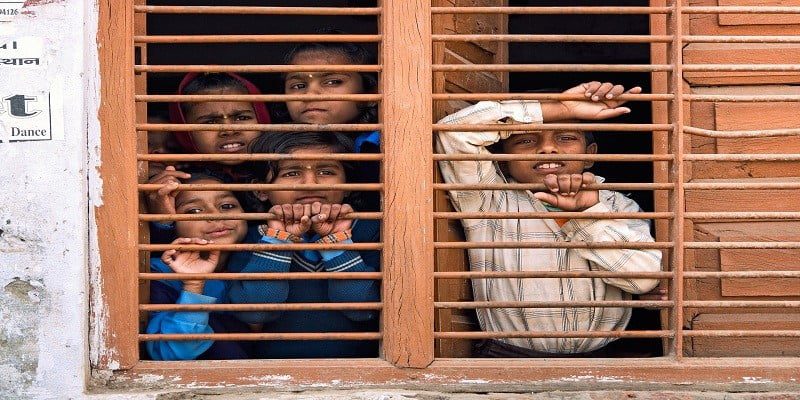Covid-19 And Its Impact On Indian Education System:
Covid-19 has disastrous effects all over the world. India being the 2nd largest population in the world and a rapidly growing Economy faced massive desolation. Due to unprepared lock-down declared by Hon’ble PM of India since 24th March, 2020. People across the country irrespective of their profession, gender, age and the places, all got affected by this lock-down declared suddenly. During these time people faced many unbearable problems. As per the statistics of ‘The Centre for Monitoring Indian Economy, the unemployment rate in India shot up from 8.75% in March to 23.48% in May. Many Pvt. school/college teachers lost their jobs and many were out of salaries. That time Digital Education started in the schools, Institutions and colleges.
How Student Communities Got Affected Due To Covid-19?
Students were the most confusing lot who also got affected during pandemic. Though at the initial stage they became so happy as their classes were suspended and exams were cancelled. “Exams and new academic year faced uncertainties and challenges. Board Examinations, Nursery School Admissions, Entrance Tests of various universities and Competitive Examinations were held amid hesitancy. Around 285 million young learners in India have been badly impacted by the Covid-19 lock-down. As the lock-down affected the traditional blackboard and chalk-talk learning process, a new teaching methodology has been erupted known as the ‘Digital Education System’.
How Digital Education Got A Shape In India During Last 2 Years?
Challenges and Initiatives in Digital Education:
Though it’s so fascinating to hear about ‘Digital/Virtual Education System’ introduced in India but it is not a cup of tea for many as it seems. Many schools have infrastructural problems in order to initiate Online Learning Classes. Many Low-Income schools and Govt. schools have completely shut down without having any proper set up for E-Learning system. The Central government has recently launched the PM e-VIDYA platform, with 12 new DTH channels, one for each class to reach out to all strata of the society. At the same time many Pvt. Partnerships and companies have boomed up taking the advantage of the adversities these days.
Partnerships and Access Disparity:
They are having tie up with the Govt. and lower end Pvt. Schools through their facilities such as providing them online platforms, apps and training to the teachers. These efforts have proved beneficial to a sizable chunk of the school-going population. Many State Governments have initiated innovative, mobile-based learning models for effective delivery of education during this pandemic period. But the harsh reality is that 24 per cent of the households in India have internet access and in urban areas, 42 per cent of households have access to the internet as compared to 15 per cent in rural areas, so this Online Education is catering to the needs of a chosen few.

Migrant Workers’ Children Struggle:
Many migrant workers have been displaced due to economic shutdown in the country. Their kids are the most sufferers at this time. Many poor Govt. School students and teachers, who belong to rural areas have their own ways of struggle and financial constraints. They are devoid of electronic gadgets such as laptops, phones or computers, even radios and TVs. Many students face hardships in finding physical space in their house to attend online classes. While male students work with their parents in farmlands and the female students do household work amid lots of social constraints. Even if there happens to be a single e-gadget in the entire house then the question arises who will have the control over during class hour!
Realities Of Indian Education System:
Social Inequalities Hinder Online Education:
Article 29 (1) of the Indian constitution states that “No citizens shall be denied admissions in any Educational Institutions under the State. Also receiving aid out of State funds on the grounds only of religion, race, caste, language or any of them.” Similarly the ‘Right to Education Act 2009’ mandates to provide equitable quality Education to all children from six to 14 years of age group. But the milieu of Online Education System is a bare possibility for all. Shocking is the fact that the government is oblivious to the stark realities of social inequalities that are proving to be the greatest barrier to access Online Education.
Issues Ignored: Education Disrupted:
But our Govt. machineries are more concerned with completing the syllabus, assessing students and conducting entrance tests for medical and engineering courses through online mode in a hurry-scurry. They ignoring the issues and concerns of the marginalized section of the society. In a complex diverse country like India where issues about specific educational, psycho-social and financial needs of students as well as teachers. Based on gender, caste, class and socioeconomic status are plenteous. There is no way a unilateral approach can mitigate School Education disruption happened during a pandemic.

Some Suggestions For The Stakeholders:
Inclusive Education: Embracing Technology:
The Central and State Governments should come forward with a policy perspective on post Covid-19 response to Education. With a rapid increase of mobile internet users in India that is expected to reach 85% households by 2024. The technology has to gain unique access and personalization of Education even in the remotest parts of the country. So, more inclusiveness in the learning process must be adopted.
Comprehensive Policy: Enhancing Education Quality:
This Policy should entail a plan to address the specific academic needs and psycho-social needs of children. Once they return to school as well as strategies to mitigate Covid-19 induced issues related to the management of schools, addressing emerging learning gaps among children and training of teachers in an absolute holistic environment. At the same time the present Indian Education System is the most diverse and the largest in the world. This is with more than 1.5 million schools and 50,000 Institutions must approach quality assurance mechanisms. Also quality benchmarks for online e-learning platforms (growing rapidly) pan India.
**********
Disclaimer:- Views expressed are the author’s own.




